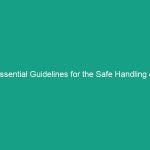Good Morning Team!
Today, we are going to talk about a vital aspect of Workplace Safety that directly affects our daily operations: Essential Ergonomic Tool Design: Choosing Tools That Minimize Stress. Ergonomic tools are designed to fit the user’s needs and capabilities, reducing the risk of strain and injury. Understanding how to choose the right tools can significantly enhance our productivity and overall well-being at work.
Understanding Ergonomic Tool Design
Ergonomic tool design refers to the process of designing tools that prioritize the comfort, safety, and efficiency of the user. The importance of ergonomic tool design in Workplace Safety cannot be overstated. Properly designed tools can reduce the likelihood of musculoskeletal disorders (MSDs), improve efficiency, and decrease fatigue.
Many employees may think that discomfort is just a part of the job, but this is a misconception. Ignoring ergonomic principles can lead to chronic pain and long-term injuries, which can affect not only individual workers but also team productivity.
Key Hazards, Risks, and Safety Considerations
There are several Hazards and risks associated with using poorly designed tools:
- Repetitive Strain Injuries: Continuous use of tools that do not fit the hand or require awkward movements can lead to conditions such as carpal tunnel syndrome.
- Muscle Fatigue: Tools that are too heavy or awkward can cause muscle fatigue and stress, impacting performance.
- Poor Posture: Tools that do not allow for proper body positioning can lead to back, neck, and shoulder injuries.
Ignoring these risks can result in real-world consequences, including increased absenteeism, decreased productivity, and even long-term disability for some employees.
Best Practices, Procedures, & Actionable Advice
To minimize stress and enhance Safety through ergonomic tool design, consider the following Best Practices:
- Select the Right Tool: Choose tools that are appropriate for the task and fit the user’s hand comfortably.
- Adjustability: Opt for tools that can be adjusted for different hand sizes and grip styles.
- Weight Consideration: Lighter tools can reduce fatigue, so consider the weight of the tool before purchasing.
- Test Tools: Encourage employees to test tools before use to ensure they are comfortable and effective.
For example, a worker using a heavy wrench for extended periods may experience hand and arm fatigue. However, switching to a lighter, ergonomically designed wrench can alleviate this issue. Another case involved a team that reported discomfort from using standard hammers; after transitioning to a shock-absorbing hammer, their complaints significantly decreased.
Regulations, Standards, and Compliance
Compliance with ergonomic Standards is critical for maintaining a safe work Environment. Organizations such as OSHA (Occupational Safety and Health Administration) have guidelines that address ergonomic practices in the workplace. These guidelines help protect employees from injuries related to Manual Handling and repetitive tasks.
By adhering to these Regulations, we not only protect our employees but also enhance overall productivity and morale. Remember, safety is a shared responsibility, and compliance is vital to create a safe working environment.
Employee Engagement & Discussion
Now, let’s open the floor to discussion. Here are a few questions to consider:
- What ergonomic tools do you currently use, and how do they impact your work?
- Have you experienced any discomfort or injuries related to the tools you use?
- What suggestions do you have for improving our tool selection?
Your feedback is invaluable, and sharing your experiences can lead to better practices and safer tools for everyone.
Conclusion & Key Takeaways
In conclusion, understanding ergonomic tool design is crucial for minimizing stress and enhancing safety in the workplace. By choosing the right tools, we can significantly reduce the risk of injuries and improve our overall productivity. Remember the key points:
- Always prioritize comfort and safety when selecting tools.
- Follow Best Practices to minimize the risk of injuries.
- Engage in discussions about tool effectiveness and safety.
Thank you all for your attention and commitment to making our workplace safer. Remember, prioritizing safety is not just a job requirement—it’s a commitment we make to ourselves and each other.


